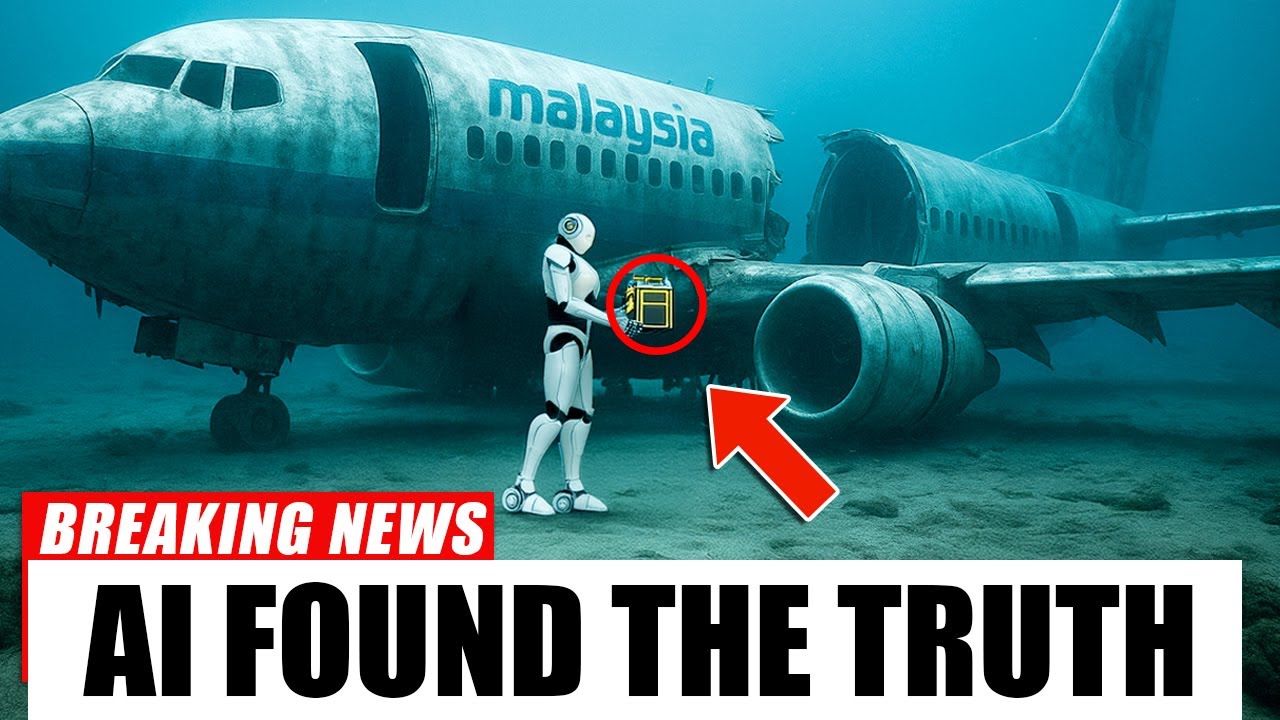On March 8, 2014, Malaysia Airlines Flight MH370, a Boeing 777 carrying 239 passengers and crew, vanished en route from Kuala Lumpur to Beijing, sparking the most expensive and perplexing search in aviation history. Despite over a decade of efforts, including a $150 million multinational search and Ocean Infinity’s 2018 attempt, the main wreckage remains elusive. In 2025, viral claims assert that artificial intelligence (AI) has “finally solved” the mystery, with “shocking” findings about the plane’s fate. These claims point to advancements in AI, quantum computing, and underwater drones used in Ocean Infinity’s resumed search, launched in February 2025. Yet, no definitive wreckage has been confirmed. This article explores the role of AI in the MH370 search, the latest theories, scientific evidence, and whether these claims hold water or are merely sensationalized narratives.

The Role of AI and New Technologies
In 2025, AI has become central to renewed efforts to locate MH370. Ocean Infinity’s search, covering 15,000 km² in the Southern Indian Ocean, employs AI-powered underwater drones equipped with high-resolution sonar and advanced sensors. These drones autonomously map the ocean floor at depths up to 6,000 meters, analyzing data in real-time to detect anomalies. AI algorithms, trained on satellite transmissions, ocean currents, and debris drift patterns, refine potential crash sites. The IBM Quantum Research Team has also applied quantum computing to simulate oceanic influences on MH370’s path, processing complex calculations far faster than traditional computers. Researcher Richard Godfrey’s analysis of WSPR data—radio signals disrupted by aircraft—suggests a crash site at 29.128°S, 18 miles wide, partially unsearched in prior missions. These technologies, detailed in a February 2025 Economic Times article, offer hope but have not yet located the wreckage, despite claims of a “solved” mystery.
Key Theories and Findings
Several theories attempt to explain MH370’s fate. The leading hypothesis, supported by a 2018 Australian Transport Safety Bureau report, suggests pilot suicide by Captain Zaharie Ahmad Shah, who may have deliberately flown the plane into the Southern Indian Ocean. Simulator data from Zaharie’s home showed a similar flight path, though his family denies personal motives. Australian scientist Vincent Lyne, in a 2024 Journal of Navigation paper, claims the plane was intentionally ditched in a 20,000-foot-deep hole in the Broken Ridge, citing damage to debris like the flaperon, akin to a controlled landing. Critics, including aviation journalist Jeff Wise, urge caution, noting Lyne’s theory lacks peer-reviewed validation. Debris drift analysis by the Commonwealth Scientific and Industrial Research Organisation (CSIRO) confirms 27 pieces, three positively identified, washed ashore on Réunion, Madagascar, and African coasts, supporting a crash along the 7th arc. No AI-driven discovery in 2025 has conclusively pinpointed the wreckage, and claims of “shocking” findings often exaggerate ongoing efforts.
The Viral “Solved” Narrative
The claim that AI “finally solved” the MH370 mystery stems from viral media, including X posts and articles like “MH370 Mystery SOLVED by AI!” (February 2025). These often misrepresent AI’s role in narrowing search areas as a definitive solution. For example, a March 2025 AAP FactCheck debunked images of an intact MH370 wreck as AI-generated fakes, noting the plane’s likely fragmentation at 6,000-meter depths. The “shocking” label may refer to speculative theories—like Lyne’s ditching or Godfrey’s WSPR pinpointing—but lacks physical evidence. The emotional weight of 239 lost lives and the mystery’s persistence fuel such narratives, amplified by clickbait on platforms like YouTube, where videos garner millions of views.
Scientific Evidence and Search Efforts
MH370’s last known path is well-documented. Military radar tracked it deviating west over the Malay Peninsula, past Penang, and into the Andaman Sea before turning south. Inmarsat’s seven “handshake” pings indicate it flew until at least 08:19 MYT, likely crashing along the 7th arc, 1,800 km southwest of Perth. Ocean Infinity’s 2025 search, paused in April due to seasonal conditions, targets this region, informed by AI and quantum models. Hydroacoustic studies, like those by Cardiff University’s Dr. Usama Kadri, explore impact signals, while barnacle geochemistry on debris provides temperature clues. Despite these advancements, the rugged ocean floor—featuring canyons and volcanic ridges—complicates detection, and black boxes, if found, may be unreadable after a decade underwater.
The Human and Cultural Impact
The absence of closure devastates families, with over 150 Chinese passengers and others from Malaysia, Australia, and beyond. Relatives like Jiang Hui and Grace Nathan have protested Malaysia’s opaque updates, as noted in a 2024 Guardian report. The mystery fuels conspiracy theories—hijacking, cyberattack, or a US shootdown—none substantiated. The fascination, akin to Amelia Earhart’s disappearance, reflects humanity’s need for answers, with AI’s role stoking hopes of resolution. Misinformation, however, risks false expectations, as seen in debunked fisherman claims from 2019 and 2023.
Challenges of Verification
Locating MH370 requires physical wreckage, as AI models and WSPR data only narrow possibilities. The Southern Indian Ocean’s depth and terrain make searches costly and slow, with Ocean Infinity’s $70 million contract hinging on success. False positives, like AI-generated images or unverified claims, muddy the waters, requiring rigorous fact-checking. Future searches may leverage the Vera C. Rubin Observatory’s data-processing capabilities, but without tangible evidence, the mystery persists.
Conclusion
The claim that AI “finally solved” the MH370 mystery in 2025 is an overstatement, driven by viral media rather than evidence. AI, quantum computing, and drones have enhanced search precision, narrowing the focus to the 7th arc, but no wreckage has been found by August 2025. Theories like pilot suicide or controlled ditching remain speculative without confirmation. The “shocking” narrative reflects our collective yearning for closure, but the truth lies in the ocean’s depths, awaiting discovery. As Ocean Infinity’s search resumes, hope endures, tempered by the need for scientific rigor over sensationalism.





